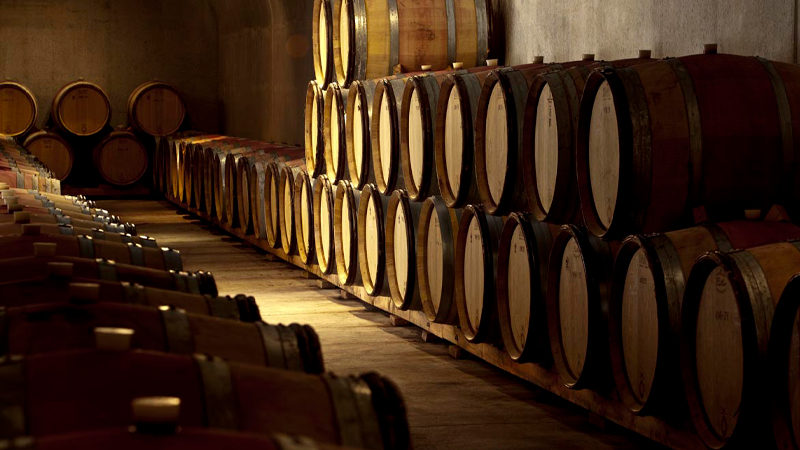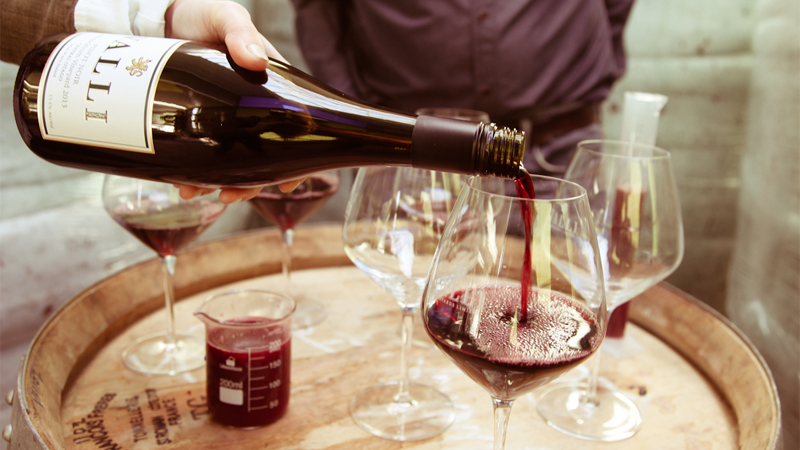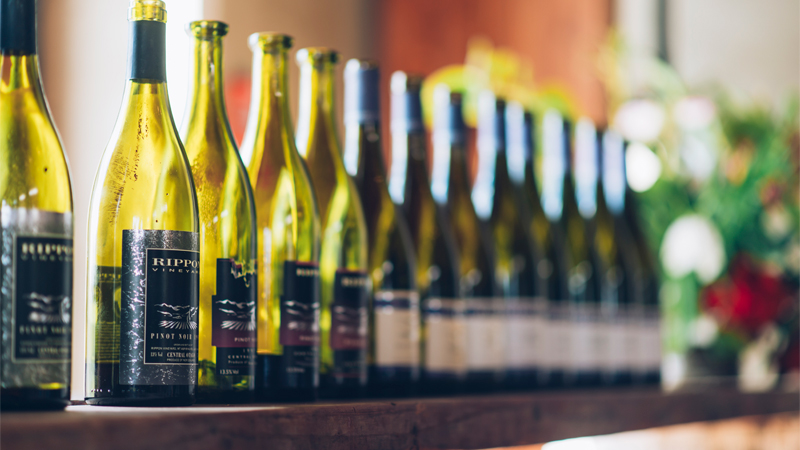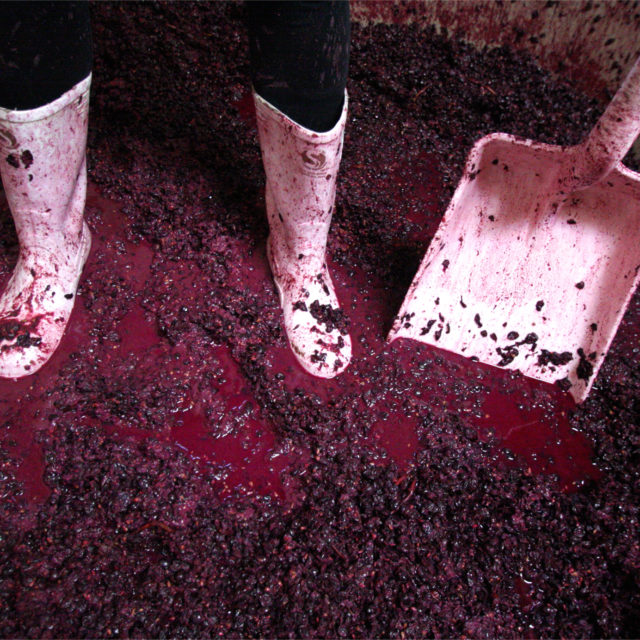The magical thing about wine is that it operates on a different timeline than most of the world around us. While our own lives change rapidly in the space of years, vineyards take their time, shifting gradually over decades and centuries. In many regions, generations of winemakers pass knowledge along to their descendants, and the wines that result are more or less identifiable over the course of time, with some vintage variation.
But that’s not what’s happening in New Zealand. The past 10 years has been nothing short of a Pinot Noir revolution. I know, because these are the wines that changed my life.
A decade ago, I landed in the country as a wine-interested travel editor updating a guidebook series; by the time I returned home to New York, I’d decided to become a wine writer.
Back then, the country’s Sauvignon Blancs were well established, but the Pinot Noirs were just getting going. The last leg on my trip was Central Otago, on New Zealand’s South Island, and that’s where I got hooked. In addition to making wine, the mountainous region is one of the world’s capitals for adventure sports, anchored by the backpacker party destination of Queenstown.
In 2010, the region’s Pinot Noirs were bright and fruity — detractors called them “fruit bombs.” But to me, a novice taster, they were vibrant and energetic, just like the 30-something winegrowers who were making them.
In addition to making wine, the professionals I spoke to were avid heliskiers, former competition mountain bikers, and hobbyist airline pilots. They were a community of adventurous risk takers. “Traditionally we were regarded as being on the edge, so that lines up nicely with the Kiwi spirit for adventure, and pioneering our rugged and youthful environment,” says Blair Walter, winemaker at Felton Road. “Not having your father or grandfather to consult with to gain from decades (or even centuries) of experience means you have increased pressure to figure this out as we go.”
That’s what came through in the glass: A willingness to experiment, to take chances that was unlike what I’d come across in more established wine regions.
Over the past several years, the evolution of these wines has captivated me. I’ve tasted through hundreds of New Zealand’s Pinot Noirs while judging wine competitions and writing articles, and these wines — especially those from Central Otago — have changed remarkably in a relatively short time span. Today, they are fresh and elegant, complex and structured, with a textural component that speaks to a specific sense of place.
In the space of a decade, how did Central Otago’s Pinot Noirs change so dramatically? In January, before the pandemic hit, I went back to the region to find out.

Conveying a Sense of Place
While Sauvignon Blanc reigns further north in New Zealand, Pinot Noir is ideally suited to Central Otago. The factors that drive Pinot Noir fans wild are all here. Drive through the valleys, and you’ll find the same orchards — cherries, hazelnuts, apricots — that characterize the best-known Pinot Noir regions of Burgundy and the Willamette Valley.
Then expand out, and consider the area as a whole: It’s one of the southernmost winemaking regions in the world, ringed by jagged peaks, high terraces, and broad hillsides. These attributes are ideal for facilitating the steep diurnal temperature shifts that lead to an ideal balance of ripe flavors and crisp acidity in wine.
“Our cooler climate retains freshness and acidity,” Walter says. “Our surrounding mountainous landscape not only conveys this metaphorically, it really does lend an ability to ripen and have a vibrancy and freshness in the wines: Mainly the cold night temperatures and contrasting bright sunshine with high UV levels in the daytime.”
Check, check, check. All the elements of a world-class Pinot Noir region are here. And the wines convey this sense of place.
“For me it is the combination of fruit purity, structure, and spice that sets Central Otago Pinots apart from other parts of the world,” says Jen Parr, winemaker at Valli Vineyards. “No one Central Otago Pinot is the same, as each subregion has a unique character, but the common vein is a special textural presence with fruit aromas that range from opulent to fresh — but they are always pure.”
As Parr alludes to, the wines have identifiable sub-regional characteristics. The valley of Gibbston, for example, has the coolest climate in Central Otago and fertile soils. This translates to wines with intense perfume, fine tannins, and a long finish. Bannockburn and Bendigo, meanwhile, are warmer growing areas in the easterly Cromwell basin. The wines tend to have more voluminous tannins with a discernible silky texture. These are the types of things Pinot Noir fans love to geek out over.

Changes in the Vineyards
Granted, vineyards evolve on a much slower timeline than humans. But I wondered how much of the changes I’d observed in the bottle over the past decade were attributable to vine age. As it turns out, quite a bit.
These days, many newer wineries in Central Otago have vineyards that are passing the 10- to 15-year old mark. And pioneers in the region, like Rippon and Gibbston Valley Winery, have vineyards upwards of 35 years old.
The “fruit bombs” I’d enjoyed a decade ago were wines made from younger vines, often less than 10 years old. Those wines showed more simple, juicy fruit notes. Now, most of the wines show more significant structural and flavor complexity, which makes sense: Wines made from older vines tend to have more freely available tannins, which provide a stronger backbone, as well as improved texture.
For Nick Mills, owner and winemaker at Rippon, texture is also a key component of terroir transmission, more so than flavors. “The difference between Vosne-Romanée and Nuits-Saint-Georges is not the smells and flavors — the cherries and plums — it’s a shape and a feel and a form,” Mills says. “What I’m looking for is textural markers that remain in a wine, even as the flesh, color, flavor, and alcohol changes from year to year.”
Rippon’s older vineyards yield wines with recognizable textural characteristics, which only became apparent as the vines matured. He describes wines from Emma’s Block, an east-facing site on clay and schist, as bright, sleek, and mobile. In contrast, he considers wine from Tinker’s Field, a north-facing site on coarse schist, to be detailed with compressed power and drive.
As vine age has advanced, so too have growers’ understandings of their vineyards. At Gibbston Valley Winery, this translates into changes large and small. “As someone who loves photography, I think of wine-growing as a gradual focusing on a subject,” says winemaker Christopher Keys. “Each (painfully slow) year means a twist in the focal ring. We see, observe, reflect, adjust.”
To optimize the fruit from its China Terrace vineyard in Bendigo, for example, the Gibbston Valley Winery team changed the vineyard’s vine training system from cane to spur, and back again to cane. They’ve moved from full sun exposure on the grape bunches to partial shading, and they’ve started harvesting the grapes earlier. Each change is a twist on the focal ring, ideally improving the resulting wine.
This level of insight and reflection isn’t just the work of a few wineries. I talked to more than a dozen winemakers on my January trip, and the commitment to quality was a ubiquitous refrain. For many wineries, that journey has manifested in a shift to organic and biodynamic practices. Some 23 percent of vineyards in Central Otago are now farmed using those principles, and the number is growing.
Many wineries, including the region’s most prominent, describe their adherence to organic and biodynamic practices as going deeper than techniques and treatments. “It’s the whole philosophy of growing and making wines that leads to more honesty and accuracy at representing the place they are grown,” says Walter of Felton Road, which has been practicing biodynamic viticulture since 2002. “The wines all possess much increased ‘somewhereness.’”

Advancing Winemaker Know-How
The pursuit of “somewhereness” through viticulture has been paralleled on the winemaking side. Many of Central Otago’s winemakers now have a decade (or two) of experience working with fruit from the same vineyards. “Vine age works in tandem with winemaker and viticulturist maturity,” says Parr of Valli Vineyards. “While the humans mellow, the vines intensify.” As winemakers’ palates have matured, the wines have evolved to emphasize freshness and poise over opulence and power.
From a technical perspective, that has meant a shift to less extractive winemaking in favor of “greater transparency, nuance, and detail,” says Walter of Felton Road. “The wines can show their sites more vividly and accurately, with less opulent fruit and extractive winemaking.”
To pursue that transparency, some wineries have reduced maceration times. Others have scaled back punch-down schedules. Some have incorporated whole clusters into their fermentations. Yet others have reduced the new oak in their barrel-aging programs. And vine age has also played its part. “There is more natural tannin in the wines that give them more natural presence without having to search for or attempt to ‘construct’ the wines,” Walter says.
Along with increased vine age and evolved winemaking techniques, there’s also been a community-wide shift in perspective. Where once the wines of Burgundy were held up as the pinnacle, now winemakers in the region have developed the confidence to lean into their own terroir. They are focused on showcasing the best expressions of their specific vineyards and subregions, instead of aiming for another region’s style.
And they’re doing so without the guardrails of strict regional appellation rules. “The wines here have a vibrancy and a life to them that is not constrained by the appellation rules of Burgundy,” says Dave Sutton, winemaker at Te Kano Estate. “You’re really able to shift your viticulture or winemaking in a way that expresses your ethos or personality or vision.”
The result is a new class of Pinot Noirs that are fresh and elegant, with greater finesse and finer tannins than ever before. They’re wines that have evolved past a period of “becoming” to a place of “arriving.” And over the past decade, that has been thrilling to watch — and to taste.
5 Central Otago Pinot Noirs to Try
Rippon Mature Vine Pinot Noir 2016
The Mills family has been farming vines on this gorgeous piece of land in Wanaka — said to be one of the world’s most photographed vineyards — since 1975. This wine is a defining bottle that showcases the region’s Pinot Noir evolution, and is made from grapes that are biodynamically farmed, without irrigation on own-rooted vines. Dense and precise, this wine layers black cherries, dried herbs, and licorice over stony notes; the body is full, with velvety tannins, and a lengthy finish. If there’s one bottle to splurge on, this is it. Average price: $54
Felton Road Bannockburn Pinot Noir 2018
This wine is a blend of four biodynamically farmed vineyards in Bannockburn that convey the elegance of a Central Otago Pinot Noir. It is built on a structure of fresh acidity, fruit purity, and silky tannins, with a bit of grip, that comes together delicately and seamlessly. Fresh raspberries and red cherries lead the way, with supporting notes of earth and savory spices that linger on. Average price: $54
Valli Gibbston Vineyards Pinot Noir 2016
A beautifully aromatic Pinot Noir with red fruit, ripe cherries, wild herbs, and cedar notes. The palate is led by vibrant acidity that gives way to concentrated layers of flavor, supported by fine-grained tannins. The wine was made by Valli’s acclaimed winemaking duo of Jen Parr and Grant Taylor. Average price: $49
Quartz Reef Bendigo Estate Single Vineyard Pinot Noir 2017
From renowned biodynamic winemaker Rudi Bauer, this Bendigo single vineyard Pinot Noir is a boldly flavored wine with silky tannins, a medium to full body, and a lengthy finish. Intense aromas of raspberries, violets, and baking spices continue on the palate, paired with a flinty mineral streak. Average price: $40
Peregrine Pinot Noir 2016
A blend of organically farmed sites from throughout Central Otago yields this bright, floral expression of Pinot Noir, crafted by winemaker Nadine Cross. Black cherry, rose, and leather notes are supported on the palate by crisp acidity, velvety tannins, and a line of stony minerality. Average price: $39
